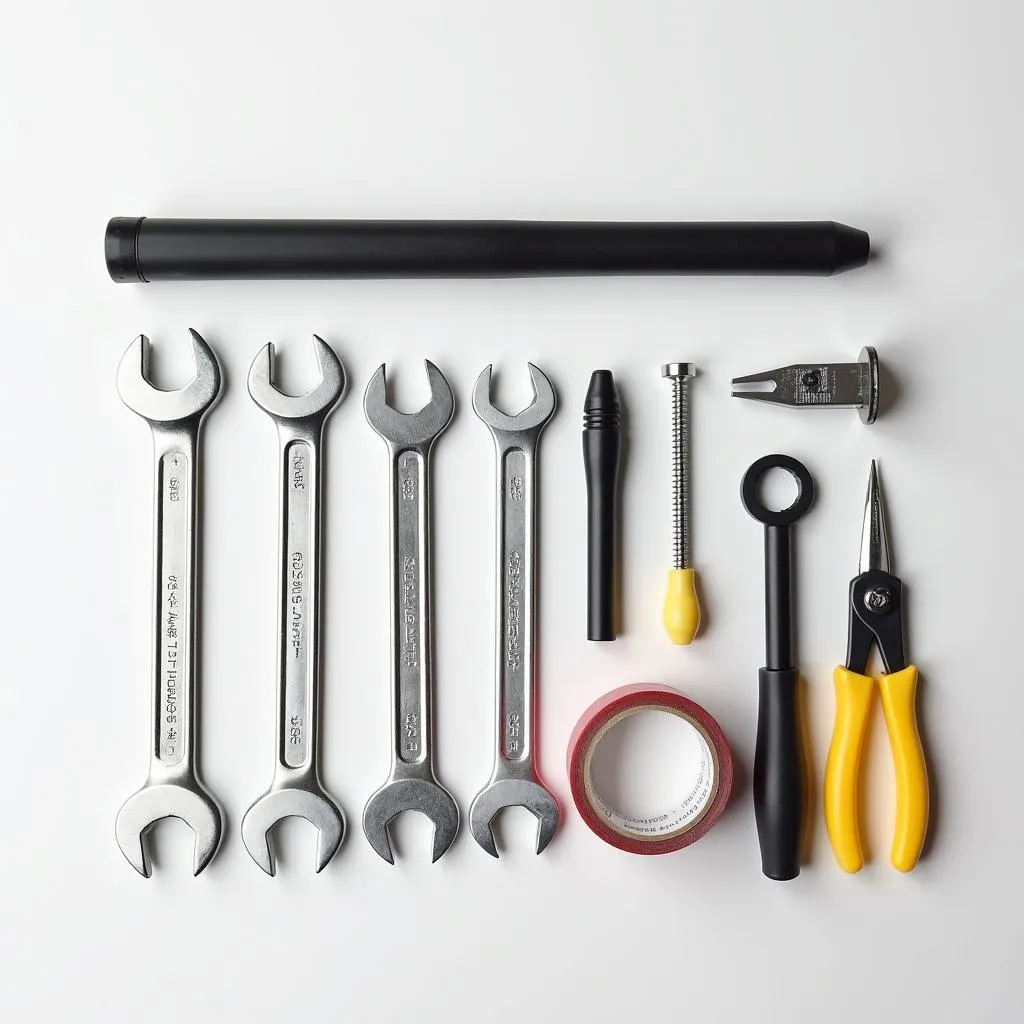A hand brake warning light on your dashboard means your car’s parking brake is engaged. While this might seem obvious, the light can also indicate other issues, from low brake fluid to a faulty sensor. Ignoring this warning can lead to serious safety risks and potential damage to your vehicle.
Understanding Your Hand Brake Warning Light
The hand brake warning light is designed to alert you if your parking brake is engaged while driving, which can cause significant damage to your braking system. However, this light can also indicate other problems, such as:
- Low brake fluid: This is one of the most common reasons for the handbrake warning light to illuminate. Brake fluid is essential for your car’s braking system to function correctly. If the fluid level is low, it can trigger the warning light.
- Worn brake pads: Your brake pads naturally wear down over time. If they become too thin, it can activate the warning light.
- Faulty handbrake switch: This switch senses whether the handbrake lever is up or down. If it malfunctions, it can send a false signal, causing the warning light to come on.
- Problems with the brake line: Leaks or blockages in the brake line can affect the pressure in the system, potentially triggering the hand brake warning light.
Troubleshooting a Hand Brake Warning
If your hand brake warning light comes on, the first thing you should do is check if your parking brake is fully released. If it’s not, release it and see if the light turns off. If the light remains on, follow these troubleshooting steps:
-
Check your brake fluid level. Locate the brake fluid reservoir under the hood of your car. The reservoir will have a “min” and “max” marking. If the fluid level is below the “min” mark, you’ll need to add more.
-
Inspect your brake pads. If you’re comfortable with basic car maintenance, you can check your brake pads yourself. Otherwise, take your car to a mechanic. Worn brake pads need to be replaced as soon as possible.
-
Inspect the handbrake switch and wiring. Look for any loose connections or damage to the wiring. If you find any issues, you can try to fix them yourself or consult with a qualified mechanic.
When to Seek Professional Help
While some handbrake warning light issues can be resolved with basic troubleshooting, others require professional diagnosis and repair. If you are unsure about any of the steps or if the problem persists after trying these solutions, it’s crucial to consult with a qualified mechanic specializing in brake systems.
“Ignoring a persistent hand brake warning light can lead to costly repairs down the line. Addressing the issue promptly ensures your safety and the optimal performance of your vehicle,” advises John Miller, a certified automotive technician with over 20 years of experience.
Remote Diagnostics and Software Solutions
In today’s technologically advanced world, remote diagnostics and software solutions play an increasingly vital role in car maintenance and repair. For instance, specific software programs can diagnose problems with your car’s braking system by plugging into your vehicle’s onboard computer. These programs can often pinpoint the issue with greater accuracy than traditional methods.
[forklift hand brake warning decal]
Furthermore, some car manufacturers offer remote diagnostics services. With your permission, they can access your car’s computer system remotely to identify potential problems, including those related to your braking system. This can be incredibly convenient and often eliminates the need for an immediate trip to the mechanic.
Preventing Future Hand Brake Warnings
Prevention is always better than cure. Here are some tips to help prevent future hand brake warning lights:
- Regular maintenance: Get your car serviced regularly according to the manufacturer’s recommendations. This includes brake fluid flushes, brake pad replacements, and inspections of the entire brake system.
[hand brake warning decal] - Don’t ride your brakes: Constantly keeping your foot on the brake pedal, even lightly, can lead to premature wear and tear of your brake pads and other components.
- Address warning signs promptly: Never ignore any warning lights on your dashboard, especially those related to your brakes.
[what is hand brake warning light]
Conclusion
The handbrake warning light is a crucial safety feature in your car. Understanding what it means and knowing how to troubleshoot it can save you time, money, and potential hazards on the road. While some fixes are straightforward, never hesitate to seek professional help from qualified mechanics or explore remote diagnostic options for a comprehensive and accurate diagnosis of your car’s braking system.
[jaguar xk foot brake and handbrake warnings]
FAQs
1. Can I drive with the handbrake warning light on?
It is not recommended to drive with the handbrake warning light on. If your parking brake is not engaged, the light indicates a potential issue with your braking system, which could compromise your safety.
2. How often should I check my brake fluid?
It’s a good idea to check your brake fluid level at least once a month and top it off if needed. Additionally, refer to your car’s owner’s manual for specific recommendations from the manufacturer.
3. How long can I drive on worn brake pads?
Driving on worn brake pads is extremely dangerous and can damage your rotors, leading to expensive repairs. If you suspect your brake pads are worn, have them inspected and replaced immediately.
4. How much does it cost to fix a handbrake warning light issue?
The cost of repair depends on the underlying problem. It could be as simple as adding brake fluid or as complex as replacing a faulty handbrake switch.
5. Can a software update fix a hand brake warning light issue?
In some cases, a software update from the manufacturer might be required to fix a hand brake warning light issue, especially if it’s related to a sensor or software glitch.

